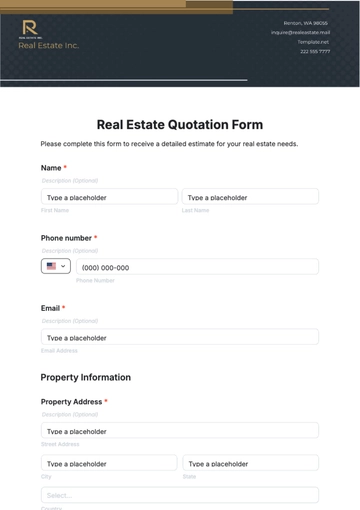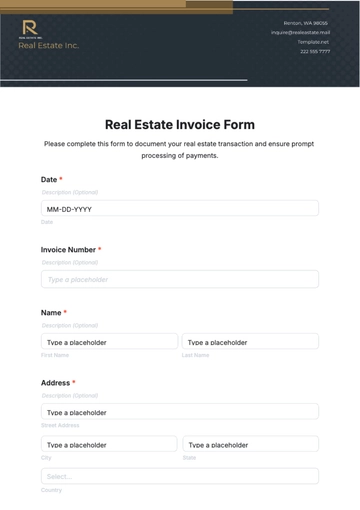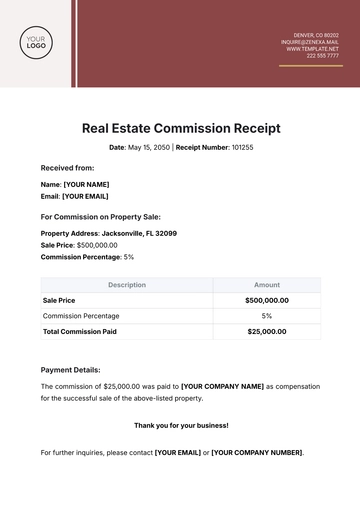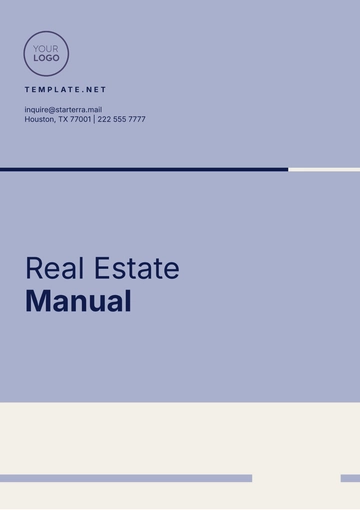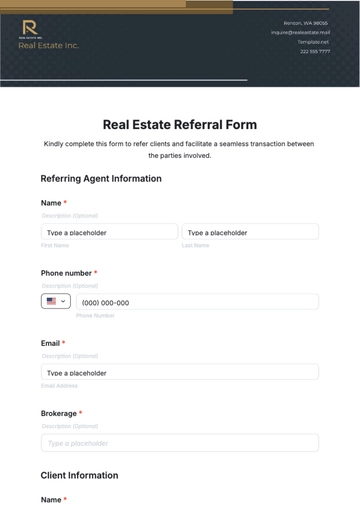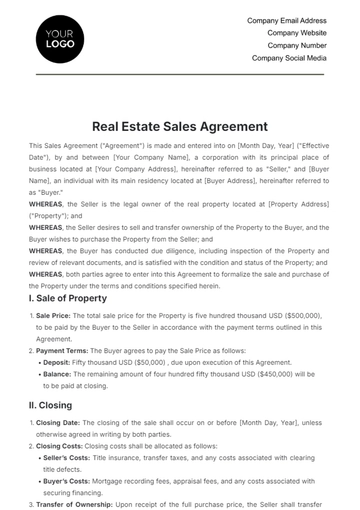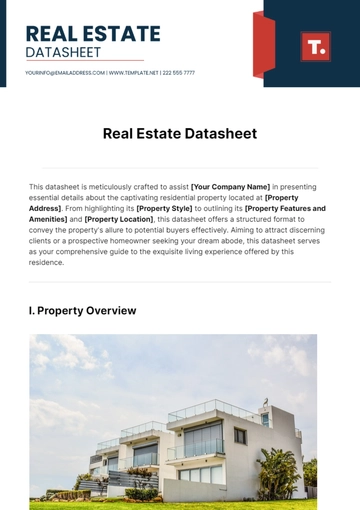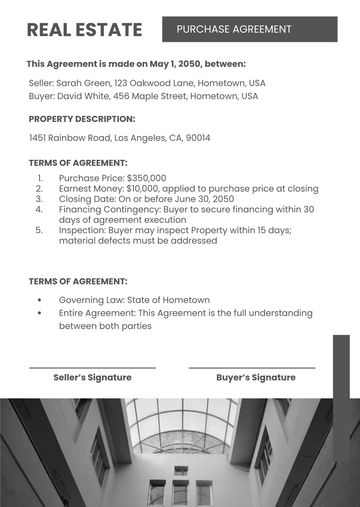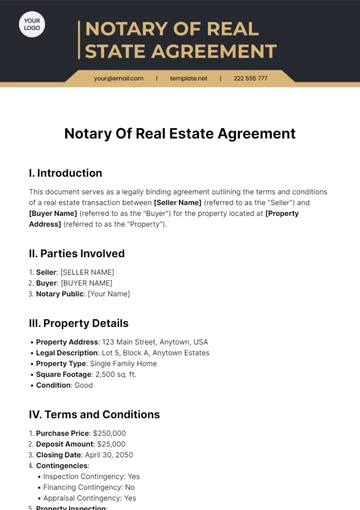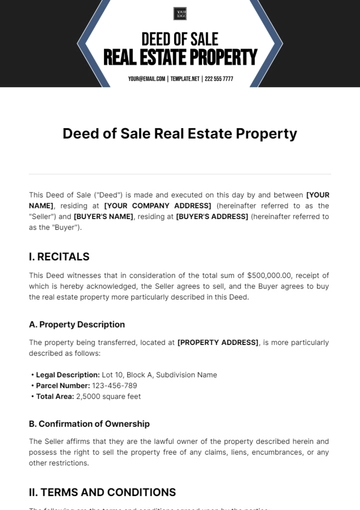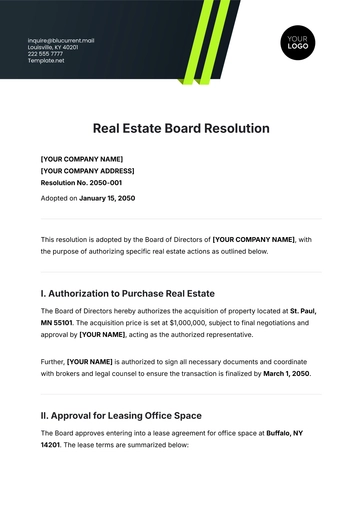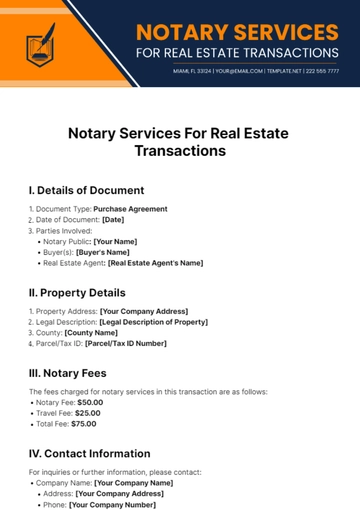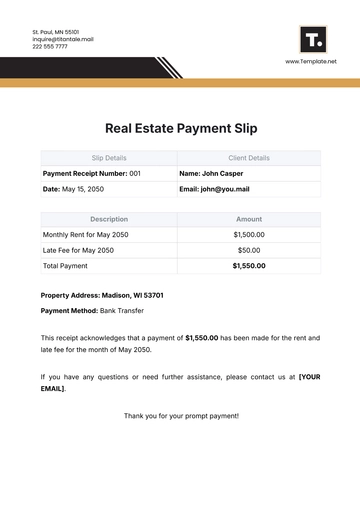Free Real Estate Property Valuation and Pricing Methodology Guide
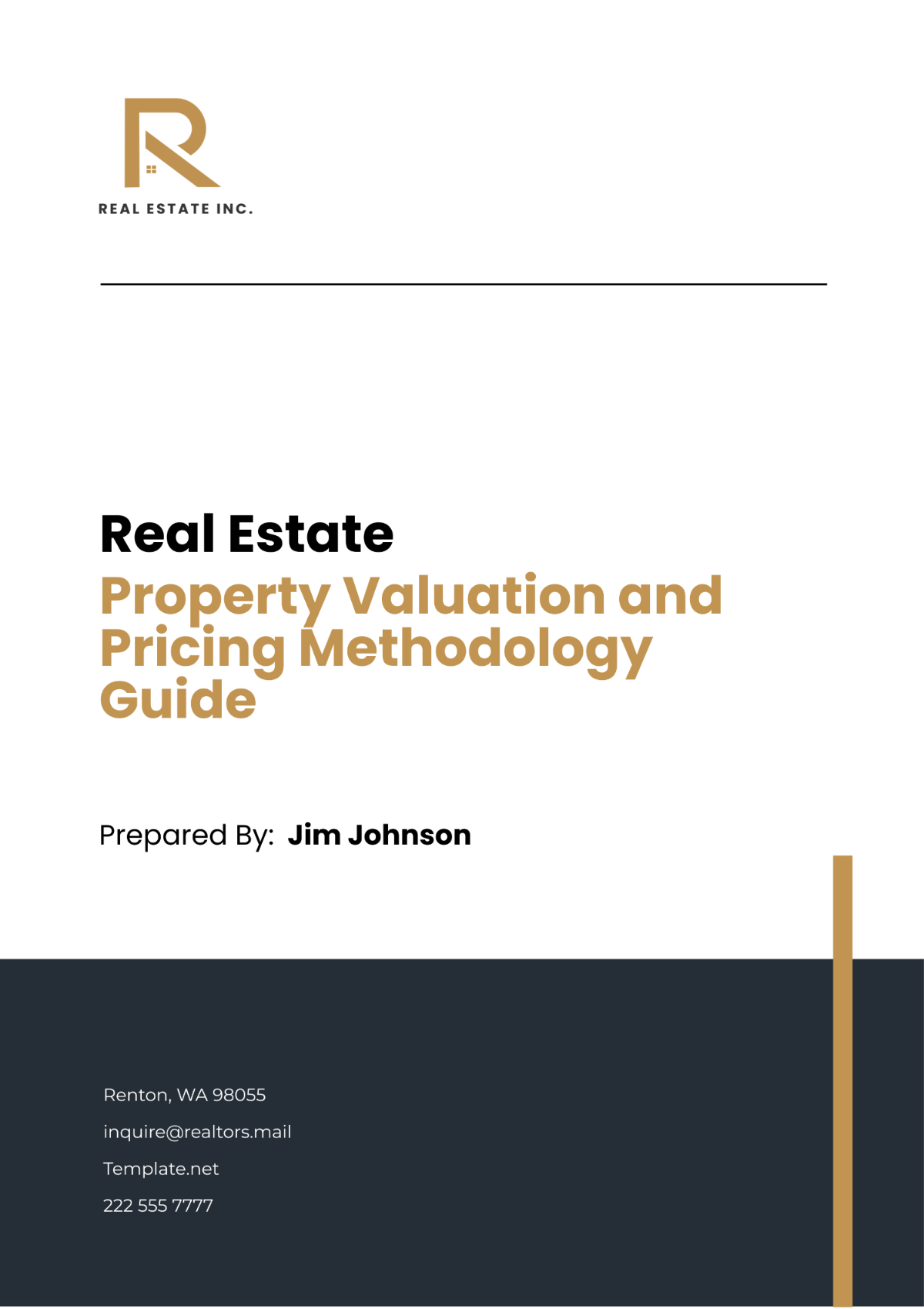
I. Introduction
A. Objectives
The objectives of this guide are multi-faceted:
Educate: The primary objective of this guide is to educate [Your Company Name]'s team members about the principles and methodologies of real estate property valuation and pricing. This knowledge is crucial for making informed decisions and providing accurate information to our clients.
Standardize: The second objective is to standardize the approach to property valuation and pricing across [Your Company Name]. By following a standardized methodology, we can ensure consistency and accuracy in our valuations and pricing, which is essential for maintaining our reputation for reliability and professionalism.
Improve Decision-Making: The third objective is to provide a framework that aids in decision-making when it comes to property valuation and pricing. With a clear understanding of how valuations and pricing are determined, our team can make more confident and informed decisions.
Enhance Client Communication: The fourth objective is to enhance communication with clients by providing clear and consistent explanations of how property values and prices are determined. This transparency can help build trust with our clients and make them feel more confident in their dealings with us.
Drive Business Success: The final objective is to drive the success of [Your Company Name] by enabling us to price properties competitively and meet our business objectives. By understanding the factors that influence property values and how to accurately price properties, we can better position ourselves in the market and drive our business success.
B. Scope
The scope of this guide covers:
Understanding Property Valuation: The first part of the scope is to provide an overview of what property valuation is and the factors that influence it. This foundational knowledge is crucial for understanding the subsequent sections of the guide.
Property Valuation Methods: The second part of the scope is to delve into the different methods used for property valuation. Understanding these methods will enable us to accurately assess a property’s value.
Pricing Strategy in Real Estate: The third part of the scope is to explore how to set the right price for a property and the factors to consider. This will equip us with the knowledge to price our properties competitively in the market.
Role of Technology in Property Valuation and Pricing: The final part of the scope is to look at how technology can aid in property valuation and pricing. This will give us insights into the latest tools and technologies that can enhance our valuation and pricing processes.
C. Target Audience
The target audience for this guide includes:
Real Estate Agents: Real estate agents who are directly involved in buying and selling properties are a key part of our target audience. They need to understand property valuation and pricing to effectively serve our clients and close deals.
Property Valuers: Property valuers, who are responsible for determining the value of properties, are another important part of our target audience. They need to understand the methodologies outlined in this guide to ensure their valuations are accurate and consistent.
Marketing Team: Our marketing team, responsible for promoting the properties and communicating with potential buyers, is also part of our target audience. They need to understand property valuation and pricing to effectively market our properties and answer any questions potential buyers may have.
Management: Finally, our management team, the decision-makers who need to understand the valuation and pricing strategies to guide the company’s direction, is also part of our target audience. They need to understand the methodologies outlined in this guide to make informed decisions about our business strategy.
II. Understanding Property Valuation
A. What is Property Valuation?
Property valuation, also known as real estate appraisal, is the process of developing an opinion of value for real property. Here are some key points:
Importance: Property valuation is essential in the real estate industry as it helps determine the price that a property can be sold or bought in the market. It forms the basis for mortgage loans, real estate transactions, and investment analysis.
Factors: Various factors influence property valuation, including the location of the property, the size and condition of the property, and the current market conditions. These factors need to be carefully considered and analyzed to arrive at an accurate valuation.
Uses: Property valuations are used for various purposes, including sales listings, financing, investment analysis, property insurance, and taxation. They provide a benchmark for determining the worth of a property in the current market.
B. Factors Influencing Property Valuation
Several factors influence the valuation of a property. Understanding these factors can help us accurately assess a property’s value.
Location: The location of a property is one of the most significant factors affecting its value. Properties in desirable locations, such as those close to amenities or with good views, tend to have higher values.
1.1. Proximity to Amenities: Properties that are close to amenities such as schools, shops, and public transport often have higher values due to the convenience they offer.
1.2. Neighborhood Quality: The quality of the neighborhood, including factors such as safety, cleanliness, and community, can also affect a property’s value.
1.3. Views and Surroundings: Properties with good views or those located in attractive surroundings can command higher prices due to their aesthetic appeal.
Property Size and Condition: The size and condition of the property also play a crucial role in its valuation. Larger properties and those in better condition generally command higher prices.
2.1. Property Size: Larger properties, particularly those with more bedrooms or bathrooms, often have higher values due to their greater capacity.
2.2. Property Condition: Properties that are in good condition, with no major structural issues or necessary repairs, are likely to be valued higher than those in poor condition.
2.3. Age of the Property: The age of the property can also affect its value, with newer properties often being worth more than older ones, all other factors being equal.
Market Conditions: Current market conditions, including the supply and demand for properties and the state of the economy, can also impact a property’s value.
3.1. Supply and Demand: If there is a high demand for properties but a low supply, property values are likely to increase. Conversely, if there is a high supply but low demand, values may decrease.
3.2. Economic Conditions: The overall state of the economy, including factors such as interest rates and employment levels, can also affect property values.
Comparable Sales: The sale prices of similar properties in the same area, known as comparables, are also used to determine a property’s value.
4.1. Recent Sales: The most recent sales of comparable properties provide the most accurate indication of current market value.
4.2. Similar Features: Comparables should have similar features to the property being valued, such as the same number of bedrooms and bathrooms, similar size, and similar location.
4.3. Adjustments: Adjustments may need to be made to the sale prices of comparables to account for any differences between them and the property being valued.
III. Property Valuation Methods
Property valuation methods are the techniques that we use to determine the value of a property. These methods take into account various factors, including the property’s physical characteristics, its location, and current market conditions.
A. Comparative Market Analysis (CMA)
Comparative Market Analysis (CMA) is a method used to determine the value of a property by comparing it to similar properties that have recently been sold in the same area.
Selection of Comparables: The first step in a CMA is to select comparable properties, or “comps”. These are properties that are similar to the one being valued in terms of size, condition, location, and features.
1.1. Similar Size: The comps should be of a similar size to the property being valued. This includes both the size of the property itself and the size of the land it sits on.
1.2. Similar Condition: The comps should be in a similar condition to the property being valued. This includes the age of the property, the state of its upkeep, and any renovations or improvements that have been made.
1.3. Similar Location: The comps should be in the same or a similar location to the property being valued. Factors such as proximity to amenities, quality of local schools, and neighborhood safety can all affect a property’s value.
Analysis of Comparables: Once the comps have been selected, the next step is to analyze them to determine their value. This involves looking at the sale prices of the comps and adjusting them to account for any differences with the property being valued.
2.1. Sale Prices: The most recent sale prices of the comps provide a baseline for the property’s value. If the comps sold for higher prices, this could indicate that the property being valued is also worth more.
2.2. Adjustments: Adjustments are made to the comps’ sale prices to account for any differences with the property being valued. For example, if a comp has a renovated kitchen but the property being valued does not, the comp’s sale price might be adjusted downwards.
Determination of Property Value: The final step in a CMA is to determine the property’s value. This is done by averaging the adjusted sale prices of the comps.
3.1. Averaging: The adjusted sale prices of the comps are averaged to determine the property’s value. This helps to ensure that the value is not skewed by any outliers.
3.2. Consideration of Current Market Conditions: The property’s value should also take into account current market conditions. For example, if the real estate market is experiencing a downturn, the property’s value might be lower than the average of the comps’ sale prices.
B. Cost Approach
The cost approach is a property valuation method that determines the value of a property by calculating the cost to build a replica of it.
Estimation of Land Value: The first step in the cost approach is to estimate the value of the land that the property sits on. This is typically done by looking at the sale prices of similar plots of land in the same area.
1.1. Location: The location of the land plays a significant role in its value. Land in desirable locations, such as city centers or near amenities, tends to be worth more.
1.2. Size: The size of the land also affects its value. Larger plots of land are generally worth more than smaller ones.
1.3. Use: The potential use of the land can also affect its value. For example, land that is zoned for commercial use may be worth more than land that is zoned for residential use.
Estimation of Construction Costs: The next step is to estimate the cost to build a replica of the property. This includes the cost of materials, labor, and developer’s profit.
2.1. Materials: The cost of materials includes everything needed to build the property, from bricks and cement to fixtures and fittings.
2.2. Labor: The cost of labor includes the wages of the construction workers, architects, and other professionals involved in building the property.
2.3. Developer’s Profit: The developer’s profit is the amount that a developer would expect to earn from the project. It’s typically expressed as a percentage of the total construction cost.
Deduction of Depreciation: The final step in the cost approach is to deduct any depreciation from the estimated replacement cost. Depreciation can occur due to physical deterioration, functional obsolescence, or external factors.
3.1. Physical Deterioration: This refers to the wear and tear that a property experiences over time. It can be due to age, use, weather, or lack of maintenance.
3.2. Functional Obsolescence: This refers to a loss in value due to outdated design features or systems. For example, a property may lose value if it has an outdated heating system or a poorly designed floor plan.
3.3. External Factors: These are factors outside the property that can cause it to lose value. For example, a property may lose value if it’s located in an area with high crime rates or poor schools.
C. Income Approach
The income approach is a property valuation method that determines the value of a property based on the income it generates.
Estimation of Potential Income: The first step in the income approach is to estimate the potential income that the property could generate. This could be rental income for residential or commercial properties, or operational income for businesses.
1.1. Rental Income: For rental properties, we would look at the potential rental income that the property could generate. This would be based on factors such as the size and condition of the property, its location, and the current rental market conditions.
1.2. Operational Income: For business properties, we would look at the operational income that the business could generate. This would be based on factors such as the type of business, its profitability, and its future growth prospects.
Deduction of Operating Expenses: The next step is to deduct the operating expenses from the potential income. Operating expenses include costs such as maintenance, property taxes, insurance, and management fees.
2.1. Maintenance Costs: These are the costs associated with maintaining the property, such as repairs, cleaning, and landscaping.
2.2. Property Taxes and Insurance: These are the costs associated with property taxes and insurance premiums.
2.3. Management Fees: If the property is managed by a property management company, there would be fees associated with their services.
Capitalization of Net Income: The final step in the income approach is to capitalize the net income to determine the property’s value. This involves dividing the net income by the capitalization rate, which is the rate of return that a reasonable investor would expect on the investment.
3.1. Net Income: This is the potential income minus the operating expenses.
3.2. Capitalization Rate: This is the rate of return that a reasonable investor would expect on the investment. It’s determined by comparing the property to similar properties that have recently been sold.
D. Sales Comparison Approach
The sales comparison approach is a property valuation method that determines the value of a property by comparing it to similar properties that have recently been sold in the same area.
Selection of Comparables: The first step in the sales comparison approach is to select comparable properties, or “comps”. These are properties that are similar to the one being valued in terms of size, condition, location, and features.
1.1. Similar Size: The comps should be of a similar size to the property being valued. This includes both the size of the property itself and the size of the land it sits on.
1.2. Similar Condition: The comps should be in a similar condition to the property being valued. This includes the age of the property, the state of its upkeep, and any renovations or improvements that have been made.
1.3. Similar Location: The comps should be in the same or a similar location to the property being valued. Factors such as proximity to amenities, quality of local schools, and neighborhood safety can all affect a property’s value.
Analysis of Comparables: Once the comps have been selected, the next step is to analyze them to determine their value. This involves looking at the sale prices of the comps and adjusting them to account for any differences with the property being valued.
2.1. Sale Prices: The most recent sale prices of the comps provide a baseline for the property’s value. If the comps sold for higher prices, this could indicate that the property being valued is also worth more.
2.2. Adjustments: Adjustments are made to the comps’ sale prices to account for any differences with the property being valued. For example, if a comp has a renovated kitchen but the property being valued does not, the comp’s sale price might be adjusted downwards.
Determination of Property Value: The final step in the sales comparison approach is to determine the property’s value. This is done by averaging the adjusted sale prices of the comps.
3.1. Averaging: The adjusted sale prices of the comps are averaged to determine the property’s value. This helps to ensure that the value is not skewed by any outliers.
3.2. Consideration of Current Market Conditions: The property’s value should also take into account current market conditions. For example, if the real estate market is experiencing a downturn, the property’s value might be lower than the average of the comps’ sale prices.
IV. Pricing Strategy in Real Estate
Pricing strategy in real estate involves setting the right price for a property. It’s a critical aspect of real estate marketing and can significantly impact the success of a property sale.
A. Setting the Right Price
Setting the right price for a property is a delicate balance. Here are some key considerations:
Market Value: The first factor to consider when setting the price is the property’s market value, which we can determine using the valuation methods discussed in Section III.
1.1. Comparative Market Analysis (CMA): As discussed in Section III, a CMA involves comparing the property to similar properties that have recently been sold in the same area. This can give us a good idea of what buyers are willing to pay for a property like ours.
1.2. Cost Approach: The cost approach, also discussed in Section III, involves calculating the cost to build a replica of the property. This can be particularly useful for new or unique properties where there may not be many comparable sales.
1.3. Income Approach: For rental properties, the income approach can be useful. This involves determining the property’s value based on the income it generates.
Market Conditions: The current conditions of the real estate market also play a crucial role in setting the price. In a seller’s market, where demand is high and supply is low, we might be able to set a higher price. In a buyer’s market, where supply exceeds demand, we might need to set a lower price to attract buyers.
2.1. Demand and Supply: If there are more buyers than properties available, we might be able to set a higher price. Conversely, if there are many similar properties on the market, we might need to set a lower price to make our property more attractive.
2.2. Economic Conditions: The overall state of the economy can also affect real estate prices. For example, if interest rates are high, fewer people might be able to afford to buy a home, which could lower property prices.
Property Features: The features of the property itself can also affect its price. Properties with desirable features, such as a renovated kitchen or a large yard, can often command higher prices.
3.1. Size and Layout: Larger properties, and those with popular layouts (like open-concept designs), generally command higher prices.
3.2. Condition and Age: Newer and well-maintained properties are typically more desirable and can often command higher prices.
3.3. Unique Features: Any unique features, like a pool or a stunning view, can add to a property’s value and should be considered when setting the price.
B. Factors to Consider When Pricing a Property
When pricing a property, it’s important to consider a variety of factors. Here are some key ones:
Location: As the old saying goes, “location, location, location”. The location of a property is one of the most significant factors affecting its price. Properties in desirable locations, such as those in good school districts or close to amenities, can often command higher prices.
1.1. Proximity to Amenities: Properties that are close to amenities such as schools, shops, and public transport often have higher values due to the convenience they offer.
1.2. Neighborhood Quality: The quality of the neighborhood, including factors such as safety, cleanliness, and community, can also affect a property’s value.
1.3. Views and Surroundings: Properties with good views or those located in attractive surroundings can command higher prices due to their aesthetic appeal.
Market Conditions: Current market conditions, including the supply and demand for properties and the state of the economy, can also impact a property’s price.
2.1. Supply and Demand: If there is a high demand for properties but a low supply, property prices are likely to increase. Conversely, if there is a high supply but low demand, prices may decrease.
2.2. Economic Conditions: The overall state of the economy, including factors such as interest rates and employment levels, can also affect property prices.
Property Condition and Features: The condition of the property and any special features it has can also affect its price.
3.1. Property Condition: Properties that are in good condition, with no major structural issues or necessary repairs, are likely to be valued higher than those in poor condition.
3.2. Special Features: Any special features, such as a renovated kitchen, a large yard, or a pool, can add to a property’s value and should be considered when setting the price.
V. Role of Technology in Property Valuation and Pricing
A. Automated Valuation Models (AVMs)
Automated Valuation Models (AVMs) are computer-based systems that estimate the value of a property based on market, economic, and geographic factors. The following table provides an overview of some key aspects of AVMs and their benefits for our real estate business:
Aspect | Benefits |
|---|---|
Speed and Efficiency | AVMs can generate property valuations much faster than traditional methods. |
Cost-Effectiveness | AVMs can be more cost-effective than traditional valuation methods. |
Objectivity | AVMs can eliminate some of the subjectivity associated with human appraisals. |
One of the main advantages of AVMs is their speed and efficiency. Traditional property valuation methods can be time-consuming, as they often involve a physical inspection of the property and a detailed analysis by a human appraiser. In contrast, AVMs can generate property valuations almost instantly, making them a valuable tool for tasks that require quick results, such as pre-qualifying borrowers for mortgages or assessing the value of a large number of properties in a short period of time.
Another advantage of AVMs is their cost-effectiveness. Traditional property valuation methods can be expensive, as they often involve the cost of a human appraiser and the time and resources required for a physical inspection of the property. In contrast, AVMs can generate property valuations at a fraction of the cost, as they don’t require a physical inspection or a detailed analysis by a human appraiser. This can make them a more cost-effective choice for property valuation, particularly for large-scale valuation tasks.
AVMs also use mathematical modeling techniques to estimate property values, which can eliminate some of the subjectivity associated with human appraisals. While human appraisers can be influenced by their personal opinions or biases, AVMs base their valuations solely on objective data, such as recent sale prices of comparable properties, property characteristics, and market and economic trends. This can result in more consistent and objective property valuations.
The use of technology in property valuation and pricing, such as AVMs, represents a significant advancement in the real estate industry. It not only improves the speed and efficiency of property valuations but also enhances their accuracy and consistency. However, while AVMs offer many benefits, they should not replace traditional valuation methods entirely. Instead, they should be used as a complement to traditional methods, providing a valuable tool for quick, cost-effective, and objective property valuations.
Moreover, as with any technology, it’s important to use AVMs responsibly. While they can provide quick and cost-effective property valuations, they are not infallible. They rely on the quality and accuracy of the data they use, and they may not take into account unique features or conditions of a property that could impact its value. Therefore, while AVMs can be a valuable tool in the property valuation process, they should be used in conjunction with other valuation methods and professional judgment to ensure the most accurate and reliable property valuations.
B. Geographic Information Systems (GIS)
Geographic Information Systems (GIS) are powerful tools that can provide valuable insights for property valuation and pricing. The following table provides an overview of some key aspects of GIS and their potential benefits for our real estate business:
Aspect | Benefits |
|---|---|
Spatial Analysis | GIS can help us identify trends and make more informed decisions about property valuation and pricing. |
Data Integration | GIS can integrate data from various sources, allowing us to analyze a wide range of factors that can affect property values. |
Visualization | GIS can create dynamic maps that visualize data in a way that is easy to understand. |
One of the main advantages of GIS is its ability to perform spatial analysis. This involves understanding the geographic patterns and relationships in data. For example, GIS can help us identify areas where property values are rising or falling, or neighborhoods that are becoming more or less popular. This can provide valuable insights for property valuation and pricing, helping us make more informed decisions.
Another advantage of GIS is its ability to integrate data from various sources. This means we can analyze a wide range of factors that can affect property values, all in one place. For example, we can overlay data on property sales, school zones, crime rates, and public transportation routes to get a comprehensive view of what’s driving property values in a particular area. This can help us set more accurate prices for our properties.
GIS can also create dynamic maps that visualize data in a way that is easy to understand. This can be particularly useful when we’re dealing with complex data or trying to communicate our findings to clients, stakeholders, or team members. For example, we could create a heat map that shows property values across a city, or a scatter plot that shows the relationship between property size and price. These visualizations can make it easier for people to understand the data and the insights we’re deriving from it.
While GIS can provide quick and cost-effective property valuations, they are not infallible. They rely on the quality and accuracy of the data they use, and they may not take into account unique features or conditions of a property that could impact its value. Therefore, while GIS can be a valuable tool in the property valuation process, they should be used in conjunction with other valuation methods and professional judgment to ensure the most accurate and reliable property valuations.
VI. Conclusion
A. Key Takeaways
Here are the key takeaways from this guide:
Understanding Property Valuation: Property valuation is a critical aspect of real estate. It involves determining the economic value of a real estate property based on various factors, including the property’s physical characteristics, its location, and current market conditions.
Property Valuation Methods: There are several methods used to determine the value of a property, including Comparative Market Analysis (CMA), the cost approach, the income approach, and the sales comparison approach. Each method has its strengths and weaknesses, and the most appropriate method to use depends on the specific circumstances.
Pricing Strategy in Real Estate: Setting the right price for a property is a delicate balance. It involves considering various factors, including the property’s market value, its features, and the current market conditions.
Role of Technology in Property Valuation and Pricing: Technology, such as Automated Valuation Models (AVMs) and Geographic Information Systems (GIS), can provide valuable insights for property valuation and pricing. They can improve the speed and efficiency of property valuations and enhance their accuracy and consistency.
B. Final Thoughts
Property valuation and pricing are complex processes that require a deep understanding of real estate market dynamics, property characteristics, and valuation methodologies. This guide has provided a comprehensive overview of these topics, equipping [Your Company Name]'s team with the knowledge and tools needed to accurately value properties and set competitive prices.
Moreover, as the real estate market continues to evolve, it’s crucial for [Your Company Name] to stay abreast of the latest trends and developments. This includes not only changes in market conditions and property values but also advancements in technology that can enhance our property valuation and pricing processes. By doing so, we can ensure that [Your Company Name] remains competitive in the real estate industry and continues to provide exceptional service to our clients. Let’s continue to leverage our knowledge and skills in property valuation and pricing to drive the success of [Your Company Name].
- 100% Customizable, free editor
- Access 1 Million+ Templates, photo’s & graphics
- Download or share as a template
- Click and replace photos, graphics, text, backgrounds
- Resize, crop, AI write & more
- Access advanced editor
Ensure accurate property valuations with our customizable Real Estate Property Valuation and Pricing Methodology Guide Template! This comprehensive solution on Template.net is an editable template designed to provide detailed methodologies for property valuation and pricing in real estate. With our advanced and intuitive AI Editor Tool, generate with ease today!

